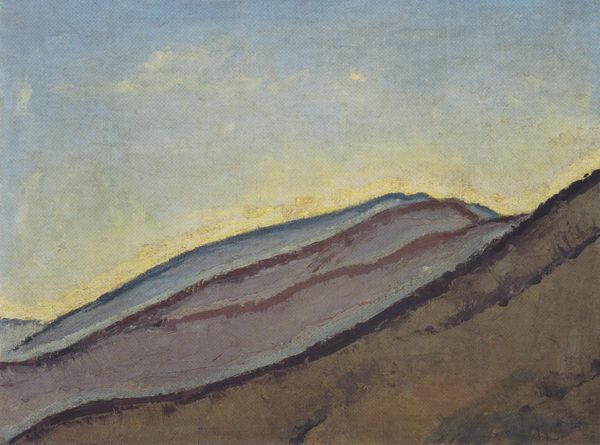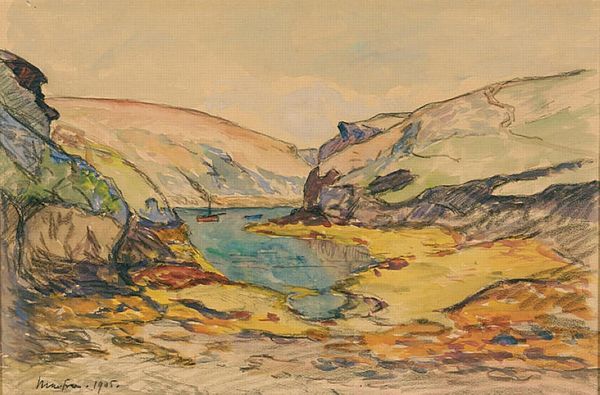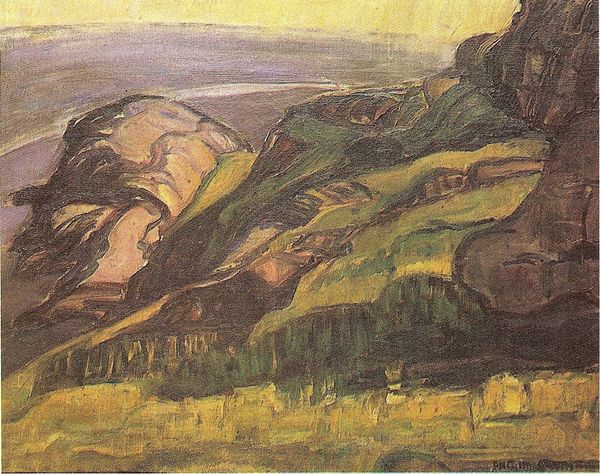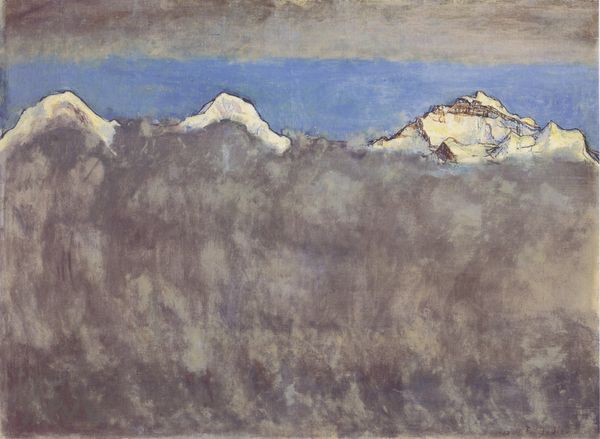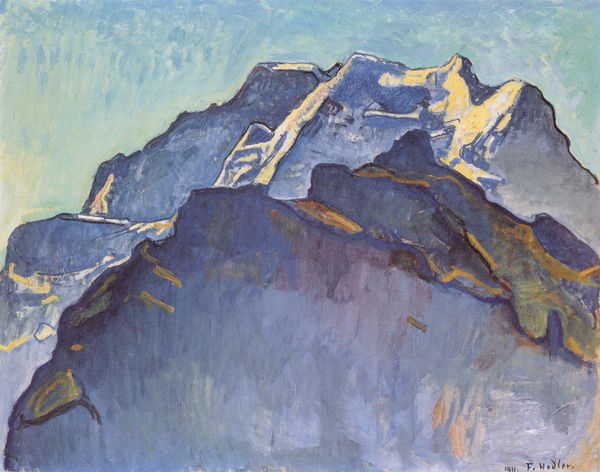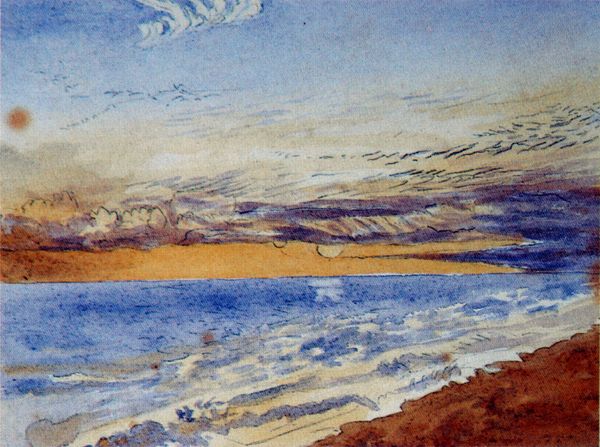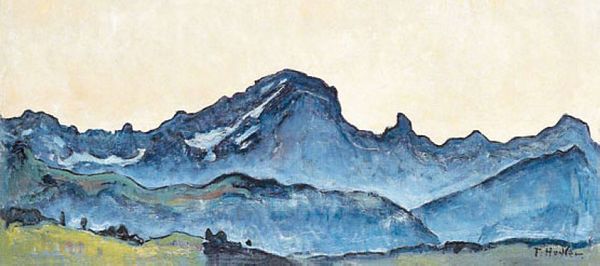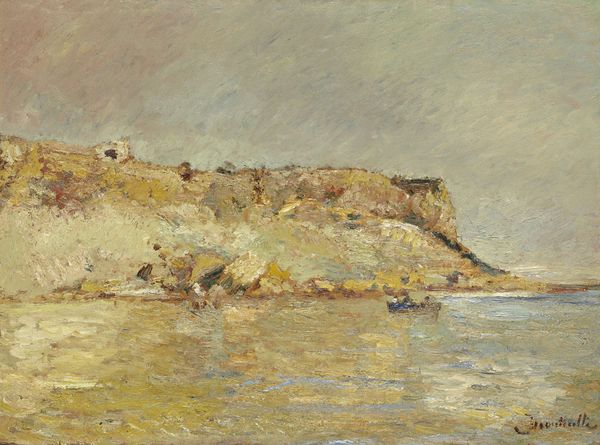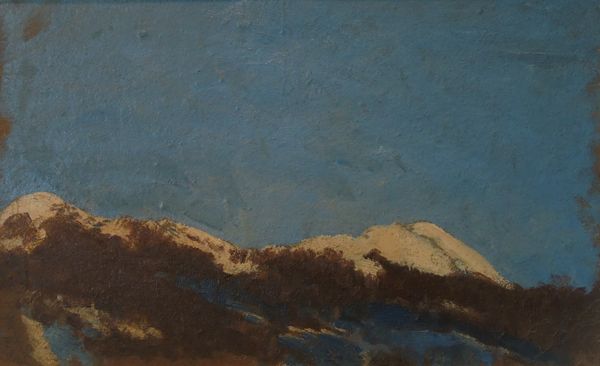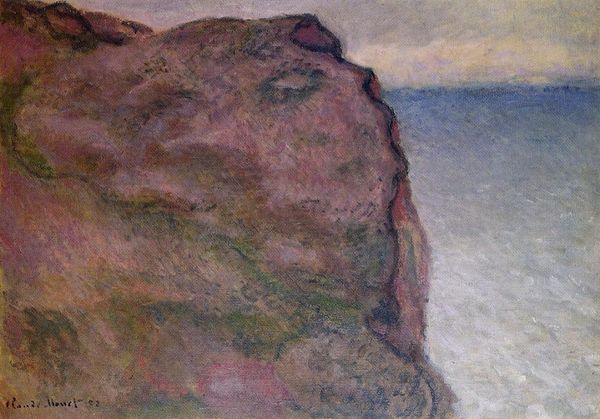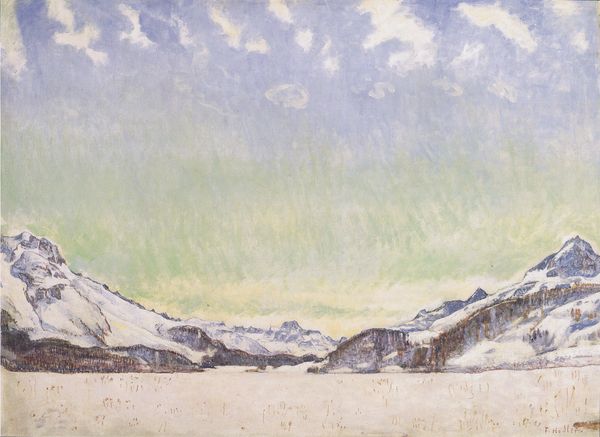
Copyright: Public domain
Curator: Here we have Childe Hassam's "The House of Actaeon, Montauk," created in 1921. Editor: Immediately, I am struck by the muted tones, almost melancholic. It's a landscape, but it evokes a certain isolation. Curator: It's a plein-air piece, so capturing a specific moment and location. The name, though, is curious. Actaeon, in Greek mythology, was punished for witnessing something he shouldn't. It raises the question: what is Hassam suggesting we are witnessing here? Editor: Symbolically, Actaeon's story represents transformation and consequence. Could this house, now barely visible and almost reclaimed by nature, symbolize a transformation of the landscape or the passage of time and what is left behind? The figures near the peak may stand for watchers. Curator: Interesting thought! Hassam was deeply embedded in the artistic and social circles of his time. This piece departs in title from his better known urban themes. The "House of Actaeon" maybe makes comment on the wealthy residents and the transient culture in a location undergoing change in the early 20th century. Editor: The cliffside almost seems like a stage set and given Hassam's history, perhaps the painting hints to both privilege and underlying dangers to society if those with privilege are seen to step outside their boundaries. Curator: It’s a poignant commentary on class and shifting power. The romantic sensibility associated with plein-air painting, yet he injects these subtle layers of critique. Editor: I love how those historical and social aspects combine to unlock new perspectives of landscape in a location now defined by the celebrity playground. It allows you to see how an art piece might continue to reveal truths, perhaps those we were blind to see previously.
Comments
No comments
Be the first to comment and join the conversation on the ultimate creative platform.
